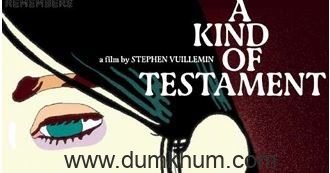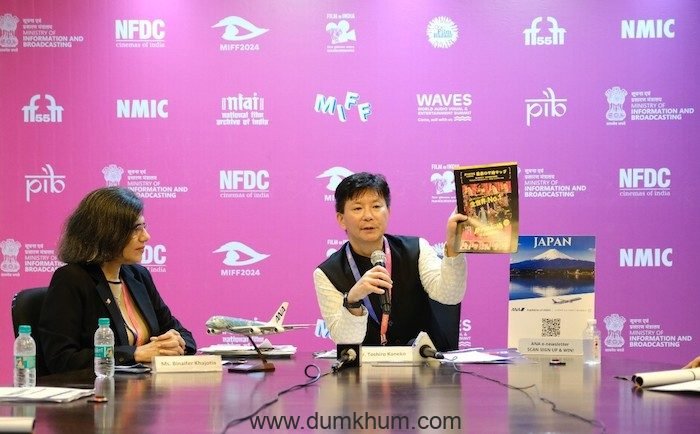BEFORE MIDNIGHT A Portrait of India on Film, 1899-1947
At the stroke of midnight on 14/15 August 1947 India finally achieved independence from Britain. Sixty years on, Before Midnight offers access to an unparalleled collection of films from the BFI National Archive exploring life in India during the early 20th century.
Some of the most potent records are to be found in the home movies – many of which are being made publicly available for the first time. The Maharajah of Jodhpur’s home movies provide an epic portrait of princely power in the 1940s, whilst those of the Craster family offer an intimate picture of British family life.
Featuring over 25 films and extracts the programme takes us on a journey from the Northwest Frontier to Lahore, Rajasthan to Darjeeling and beyond. Before Midnight offers an unrivalled portrait of how lives — both Indian and British — were led across the Subcontinent.
The films in this programme have been selected from the BFI Mediatheque’s collection of over 150 films shot in India prior to independence.
NB Although Ceylon (now Sri Lanka) was one of Britain’s possessions in the Indian subcontinent it was ruled as a Crown Colony directly from London. Given the many links with mainland India during this period – political, economic and cultural – we have included films of Ceylon in this programme.
Reviews by Robin Baker, Jayasree Kalathil, Simon McCallum and Mansur Quraishi.
PANORAMA OF CALCUTTA (1899)
One of the earliest surviving films of India, for over 100 years this film was believed to show Calcutta from the perspective of boat travelling along the Hooghly river, a tribuary of the Ganges. However, Indian viewers have recently identified the film as having been shot in the holy city of Varanasi.
CORONATION DURBAR AT DELHI (1903)
On New Year’s Day 1903 a spectacular Durbar was held to commemorate the coronation of Edward VII and Queen Alexandra as Emperor and Empress of India.
The second of three Delhi Durbars (the others were held in 1877 and 1911), this was the most spectacular. Masterminded by Viceroy of India, Lord Curzon, a deserted plain was transformed in just a couple of months into a magical tented city. However, Edward failed to turn up for the festivities, sending his brother, the Duke of Connaught, instead, much to the chagrin of Curzon.
This short film doesn’t quite capture the scope or opulent excess of the event, but records the arrival of some of the dignitaries – including the Duke and Duchess of Connaught, Lord Curzon, and Countess Curzon – and a handful of the countless elephants.
COMMISSIONER HIGGINS VISITS AHMEDABAD GIRLS’ SCHOOL (1904)
CORONATION DURBAR AT DELHI (1903)
On New Year’s Day 1903 a spectacular Durbar was held to commemorate the coronation of Edward VII and Queen Alexandra as Emperor and Empress of India.
The second of three Delhi Durbars (the others were held in 1877 and 1911), this was the most spectacular. Masterminded by Viceroy of India, Lord Curzon, a deserted plain was transformed in just a couple of months into a magical tented city. However, Edward failed to turn up for the festivities, sending his brother, the Duke of Connaught, instead, much to the chagrin of Curzon.
This short film doesn’t quite capture the scope or opulent excess of the event, but records the arrival of some of the dignitaries – including the Duke and Duchess of Connaught, Lord Curzon, and Countess Curzon – and a handful of the countless elephants.
COMMISSIONER HIGGINS VISITS AHMEDABAD GIRLS’ SCHOOL (1904)
CORONATION DURBAR AT DELHI (1903)
On New Year’s Day 1903 a spectacular Durbar was held to commemorate the coronation of Edward VII and Queen Alexandra as Emperor and Empress of India.
The second of three Delhi Durbars (the others were held in 1877 and 1911), this was the most spectacular. Masterminded by Viceroy of India, Lord Curzon, a deserted plain was transformed in just a couple of months into a magical tented city. However, Edward failed to turn up for the festivities, sending his brother, the Duke of Connaught, instead, much to the chagrin of Curzon.
This short film doesn’t quite capture the scope or opulent excess of the event, but records the arrival of some of the dignitaries – including the Duke and Duchess of Connaught, Lord Curzon, and Countess Curzon – and a handful of the countless elephants.
COMMISSIONER HIGGINS VISITS AHMEDABAD GIRLS’ SCHOOL (1904)
A NATIVE STREET IN INDIA (1906)
A busy street is filmed from a static camera position. Unfortunately, given the lack of clearly recognisable features, it seems to be impossible to identify the city.
CINGHALESE DANCES (1910) – extract
This incomplete film features a series of scenes shot in Ceylon, captured on a beautifully tinted film print. The extract seen here is of the eponymous dances.
NATIVE LIFE IN CEYLON (1910) – extract
This early travelogue of Ceylon features some remarkably vivid footage. This extract includes an entertaining piece of ‘native magic’.
DELHI DURBAR (1911) – extracts
The Delhi Durbar on 12 December 1911 was held to commemorate the coronation of King George V and Queen Mary as Emperor and Empress of India. These extracts capture the ceremonies, including parades, the durbar review of 50,000 Indian soldiers and Indian kings and queens paying homage.
SWORD DANCE PERFORMED BEFORE THE KING AND QUEEN IN INDIA (1912)
Not exactly a sword dance, this film shows a performance of some considerable agility as men risk life and limb by jumping through formations of swords.
Presumably filmed at the Delhi Durbar of 1911, but there is no evidence in the film of the King and Queen attending this part of the event.
THE WONDERFUL FRUIT OF THE TROPICS (1914) – extracts
India’s fruit harvest appears all the more delicious given that the film is tinted. Coloured tints were applied to the film using stencils.
CALCUTTA TOPICAL No. 1 (1925) – extracts
Calcutta Topical claimed to be “showing all the leading events of the season”, and the emphasis here is very much on society rather than sport. The event was the King-Emperor’s Cup Race, held at the Calcutta Race Course (built in 1820), but horses take second place to fashion. There are a significant number of affluent Indian race-goers to be spotted in the crowds.
A NATIVE STREET IN INDIA (1906)
A busy street is filmed from a static camera position. Unfortunately, given the lack of clearly recognisable features, it seems to be impossible to identify the city.
CINGHALESE DANCES (1910) – extract
This incomplete film features a series of scenes shot in Ceylon, captured on a beautifully tinted film print. The extract seen here is of the eponymous dances.
NATIVE LIFE IN CEYLON (1910) – extract
This early travelogue of Ceylon features some remarkably vivid footage. This extract includes an entertaining piece of ‘native magic’.
DELHI DURBAR (1911) – extracts
The Delhi Durbar on 12 December 1911 was held to commemorate the coronation of King George V and Queen Mary as Emperor and Empress of India. These extracts capture the ceremonies, including parades, the durbar review of 50,000 Indian soldiers and Indian kings and queens paying homage.
SWORD DANCE PERFORMED BEFORE THE KING AND QUEEN IN INDIA (1912)
Not exactly a sword dance, this film shows a performance of some considerable agility as men risk life and limb by jumping through formations of swords. Presumably filmed at the Delhi Durbar of 1911, but there is no evidence in the film of the King and Queen attending this part of the event.
THE WONDERFUL FRUIT OF THE TROPICS (1914) – extracts
India’s fruit harvest appears all the more delicious given that the film is tinted. Coloured tints were applied to the film using stencils.
CALCUTTA TOPICAL No. 1 (1925) – extracts
Calcutta Topical claimed to be “showing all the leading events of the season”, and the emphasis here is very much on society rather than sport. The event was the King-Emperor’s Cup Race, held at the Calcutta Race Course (built in 1820), but horses take second place to fashion. There are a significant number of affluent Indian race-goers to be spotted in the crowds.
A PUNJAB VILLAGE (1925) – extracts
A snapshot of life in a village in the Punjab – from the production of mustard oil to the shoeing of a bullock. With intertitles that include such jewels as “they do a great deal of spinning,” it’s clear that this film was made for young audiences.
THE NORTH WEST FRONTIER (1928) – extracts
In October 2006 Prince Charles and Camilla cancelled a planned visit to Peshawar due to increasing unrest in the region and in May 2007 a bomb planted in a Peshawar hotel killed 24 people. Pakistan’s North-West Frontier – located on the edge of the Khyber Pass and one of the major centres of the ancient Silk Route – has had a long and troubled history.
This travelogue offers not only a vivid portrait of life in the province in the 1920s (then part of British India), but clearly demonstrates the political unease. The film features a portrait of Peshawar, the village of Kabla (with its slightly alarming gun-making industry) and the town of Landi Kotal (just 5km from the border with Afghanistan) with its mud fort – described as “the last outpost of Britain on the central Asian road”.
THE HOME MOVIES OF T. BURTT (1933) – extracts
T. Burtt’s home movies include this vivid portrait of Lahore in the 1930s. It’s easy to assume that tactless members of the Raj filmed exactly what they wanted without requesting permission. So, it’s pleasing to discover that Burtt achieved his extraordinary footage of prayers at the Badshahi Mosque with the help and full approval of the Mosque authorities. Despite the wobbly camera and dodgy angles, this is epic cinema.
THE CRASTER FAMILY HOME MOVIES (c1933) – extracts
The Craster family home movies offer a charming snapshot of filmmaker George and daughter Mary at home at Jotwara, Rajasthan. Colonel George Craster had a long and distinguished career in the Indian Army and was first commissioned in 1898. He retired in 1930 and became Chief Staff Officer of Jaipur State where these films were taken. The films also feature the Craster family menagerie – Baba (a bull terrier), Vanya (a cross-bred ‘mistake’ – born of the union between the Maharajah’s pedigree Alsation and a Borzoi!) and Mus (Mary’s first pony). There was also a rather larger and more occasional ‘pet’ in the form of Lakshmi, one of the Maharajah of Jaipur’s elephants who often came to the house to provide a rather exclusive ride for Mary.
A FOOT-HILL TOWN (1937) – extract
Darjeeling was one of the Himalayan foothill towns favoured by fragile members of the Raj in their bid to escape the blistering summer heat in Calcutta.
This film was re-edited from material shot for a Secrets of India portrait of Darjeeling and features footage Government House, the bazaar and the ‘toy train’ railway (declared a World Heritage Site in 1999). Among the highlights are a pair of Westerners who have taken to local dress, and in the film’s most telling sequence, the sight of four men pushing and heaving two Brits up a precipitous slope in a rickshaw.
The following three extracts are from short films shot in Technicolor by a young Jack Cardiff – the Oscar-wining cinematographer of Black Narcissus (1946).
This film was re-edited from material shot for a Secrets of India portrait of Darjeeling and features footage Government House, the bazaar and the ‘toy train’ railway (declared a World Heritage Site in 1999). Among the highlights are a pair of Westerners who have taken to local dress, and in the film’s most telling sequence, the sight of four men pushing and heaving two Brits up a precipitous slope in a rickshaw.
The following three extracts are from short films shot in Technicolor by a young Jack Cardiff – the Oscar-wining cinematographer of Black Narcissus (1946).
DELHI (1938) – extract
As much a test for showing off Jack Cardiff’s Technicolor cinematography as a portrait of Delhi, this short film presents the city – and the period – as rarely seen before. After a brief historical and architectural preamble, the film moves into an extended sequence, clearly designed to flaunt stunningly coloured saris among the gardens of the Red Fort.
TEMPLES OF INDIA (1938) – extract
Don’t come looking here for an accurate portrayal of Hinduism; the religion on offer jeer is like something out of the adventures of Indiana Jones, performed in the style of The King and I. This sequence features a dancer performing Shiva’s ‘Dance of Destruction’.
A ROAD IN INDIA (1938) – extract
The sights of India as seen from the perspective of a dusty road. This portrait of ‘the enigmatic and disturbing East’ is big on exoticism and cliché, but Jack Cardiff’s cinematography makes for compelling viewing.
IN RURAL MAHARASHTRA (?1940)
Happy farmers, a wedding and some giant cauliflowers… Described as “the land of smiling people,” rural Maharashtra in west India is the setting of this film. In this quaint look at country life, the roles of the smiling farmer and his wife are clearly played by professional actors in a style reminiscent of Indian films of the time. They frequently looks as if they are about to burst into song.
The film was produced by the Prabhat Film Comany – then one of India’s leading feature film production companies – for the Films Division of the Government of India.
THE MAHARAJAH OF JODHPUR’S HOME MOVIES (c1947) – extracts
The BFI National Archive looks after the astonishing home movie collection of Maharajah Ummed Singh, ruler of the Indian princely state of Jodhpur between 1918 and 1947, and his illustrious family. While much work remains to be done on researching the people and places they depict, these films represent an invaluable record of princely power in the days of the Raj.
These extracts feature a vast procession to Jodhpur which is likely to be the funeral of Maharajah Ummed Singh, who died on 9 June 1947. The corpse is burned and offerings are thrown onto the funeral pyre. Note the men’s turbans: white is the colour of mourning in India.
TINS FOR INDIA (1941)
Ever wondered about the number of uses an empty kerosene tin can be put to? This film tells us that the kerosene tin is as common a site as a palm tree and a bullock cart in the “real” India, the rural India. The film shows the production of a tin and the different ways in which it is used after it has fulfilled its destiny as a holder of kerosene.
Directed and photographed by Bimal Roy – one of Indian cinema’s greatest directors – Tins for India was made over a decade before the major success of features such as Devdas and Parineeta.
CLARMONT SKRINE’S HOME MOVIES (c1946) – extracts
Clarmont Skrine – known in India as ‘Skrino’ – had a long career as ‘an envoy of the Raj’. During his time as a Resident in South India a friend wrote: “He was so unlike the stereotyped ICS [Indian Civil Service] dignitaries (the Heaven-born), he was so human and approachable.” Skrine was not an ambitious man, but was apparently much more interested in his two big passions – exploration and, luckily for us, photography.
These extracts show Skrine and his wife on a trip to Bundi, Rajasthan. The footage captures numerous details of the city’s spectacular architecture including the Taragarh Fort and Bundi Palace which Kipling described as “such a palace as men build for themselves in uneasy dreams – the work of goblins rather than of men”.
G. MACKRELL’S HOME MOVIES (c1947) – extracts
G. Mackrell was a tea planter and big game hunter who lived in India from the mid-1930s to the late-1950s. During WWII, Mackrell was involved in rescuing refugees fleeing Upper Burman before the Japanese advance. His amateur films provide some of the clearest records of the adventurous life that many British entrepreneurs and military personnel forged for themselves in India prior to Independence.
These glorious colour extracts record a fishing trip by canoe down the Barak River in north eastern India, and a geese-shooting expedition, which prove extremely fruitful judging by the array of catch with which the Mackrell party are seen posing.
NOAKHALI MARCH (1946) – extracts
The film shows Mahatma Gandhi’s visit to Noakhali, after the Hindu-Muslim riots (variously known as the Calcutta riots and the Noakhali Massacre) in 1946. The film includes shots of Susheela Nayar (Gandhi’s doctor), Mann Gandhi (his granddaughter) and Jawaharlal Nehru and was shot by Kanu Gandhi – Gandhi’s great nephew. Kanu was a member of Gandhi’s personal staff and they worked closely together until his assassination on 30 January 1948.
Kanu was one of the most important chroniclers of Gandhi’s life. He was given his first stills camera in 1936 and began to document the great man’s final years on three conditions: that he would not use flash photography; that the ashram would not fund him and that Gandhi would never pose. He had exclusive access to Gandhi and was therefore able to capture shots that would elude any other photographers.
Kanu’s photographs formed the basis of a number of the shots in Richard Attenborough’s biopic, Gandhi (1982).










